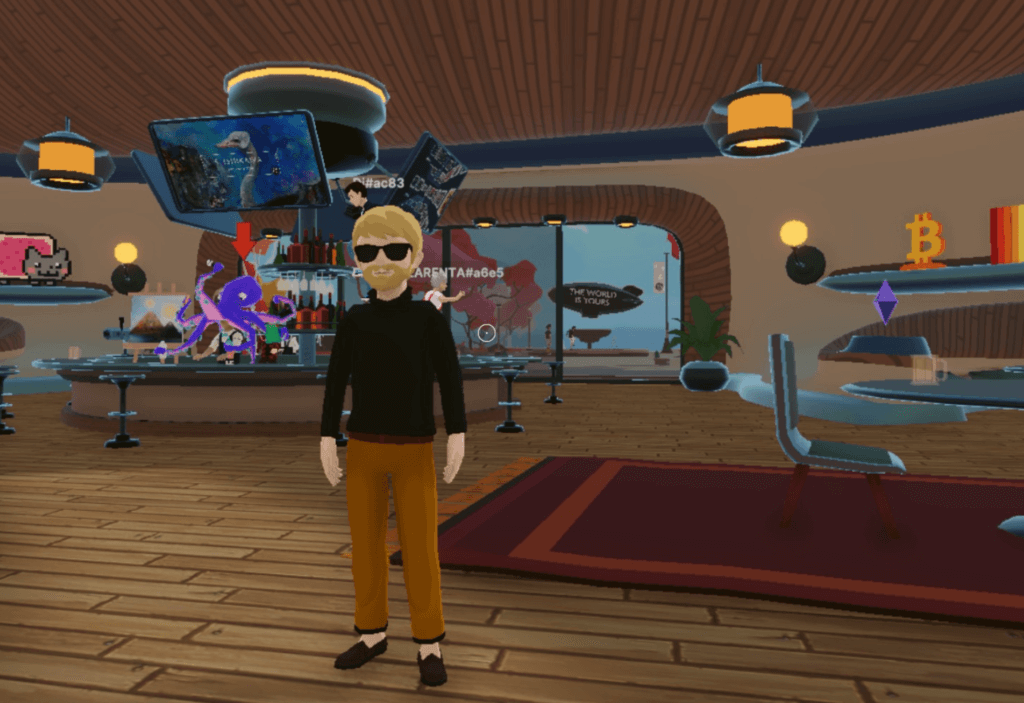The past 12 months have been dominated by the hype surrounding jpegs of apes, kitties, and pixelated “punks”. Yes, I’m referring to the explosion in NFTs. Was this what the pioneers of the open web, and now blockchain technology, visualized as the future?
Probably not, but these NFTs are some of the building blocks that help shape something much bigger: the metaverse.
Since Facebook’s announcement that they’re forming a new parent company, Meta, to reflect their move toward being a “metaverse company”, the curiosity (and accompanying confusion) surrounding the topic has heightened.
Explained simply, the metaverse is a collection of virtual worlds where individuals can explore, create, and connect with each other. Think, Minecraft meets Snapchat.
While there’s a lot of hype to cut through right now, I believe that we’re at the beginning of the next phase of how we interact and socialize online. Over the next decade, the metaverse is poised to have a more significant impact on the web than the rise of social media in the early 2000s. That’s a bold statement, I know, but there are three core reasons why I believe this to be true:
- The users of the metaverse will also be the owners of the metaverse.
- Virtual world experiences are going to be seamlessly integrated into the majority of our real-world experiences.
- The metaverse will capitalize on the heightened demand for greater security, privacy, and anonymity/pseudonymity online.
The tailwind behind all of this is that the majority of the core experiences that the metaverse brings have already become commonplace for the younger generations. Instagram filters, Apple Memojis, and Snapchat lenses are some of the most obvious examples where the lines between the virtual and real world are blurred. A recent report from Snap found that 1.5bn social media users were frequently using AR, with this forecast to grow to 3.5bn by 2024.
Our interactions with the virtual world have become much more commonplace than we realize, and it’s only going to increase.
When you think about the major stages of technological development that we’ve seen since the dawn of the internet, each stage has enabled us to remain online for longer. In the late 90s/early 2000s, our access to the internet was limited to specific times – namely when we were at a PC. As smartphones arrived, our connectivity dramatically increased. We could take it with us and access it as we chose. Once the metaverse matures, our access to the internet will become perpetual. We’ll always be connected and we’ll think about it as part of our physical world experience.
How did we get here?
The concept of a metaverse isn’t really a new one. The likes of Fortnite, Roblox, and Minecraft are all virtual worlds where – like in the definition of a metaverse that I shared above – individuals can explore, create, and connect with each other.
There was also a virtual world created that outdates all of the aforementioned: Second Life.
Second Life, which you may know from this scene in The Office, is probably one of the closest examples we’ve had so far to a metaverse experience. Launching in 2003, the platform looked like a mashup between The Sims and a traditional chatroom experience. It was a virtual world where you had your own digital avatar that you used to explore and connect with other users.
What captured the imagination of many people at the time was the fact that Second Life had its own native currency, Linden Dollar (L$), which could be used to buy virtual real estate, clothes for your avatar, accessories, cars, and more. This was well before cryptocurrencies like Bitcoin were created, but unlike Bitcoin, the Linden Dollar was centrally controlled by the Second Life team – something that contributed to its eventual demise.
What quickly appeared was a thriving economy that formed around the platform. You could earn real money from participating in Second Life, and over 1 million monthly active users were. This could be as simple as buying and selling virtual goods through to getting a virtual job. The first recorded “virtual millionaire”, Anshe Chung, was made within Second Life, which was described at the time by Fortune as “someone whose holdings in a make-believe world are legally convertible into genuine U.S. currency worth more than $1 million.”
By 2009, the GDP within Second Life reached $567m (USD), up from $64m in 2006. That’s more than the GDP of the country, Tonga. Brands like Sony, Dell, MTV, Coke, and many more had created their own virtual stores and experiences there, and Adidas even used their virtual store to launch and sell a brand new sneaker.
Second Life was an early pioneer of selling virtual goods, something that’s now become ubiquitous online. This is something that games like Fortnite have capitalized on, with their users spending more than $1 billion each year on virtual goods. One of the character skins they launched in collaboration with the NFL earned them over $50million in sales (from a single skin!).
All that said, after suffering a string of high-profile hacks, resulting in major data breaches, the Second Life platform began a spiral of decline. The centralized ownership of the platform and all of its assets created both an incentive for the team to make decisions that benefited the company over its users, as well as an increased vulnerability to cyber-attacks. These two combined spelled the end for their growth.
This time will be different
Legendary investor, John Templeton, once said, “The four most dangerous words in investing are, it’s different this time.” Well, sorry, John, you’d have hated this next section…
The single most significant difference between the emerging metaverse and platforms like Second Life, Fortnite, and Roblox is that it’s being built using blockchain technology, meaning it’s completely decentralized with no single owner.
This is significant for a number of reasons:
- The economy within the metaverse can be governed by its users.
- The assets within the metaverse (e.g. the virtual goods and currency) will be owned by the users, not a centralized company.
- It’s dramatically more secure than any technology we’ve ever had before.
The community within a virtual world is ultimately what creates its value – just like with social media platforms – and one critical component that needs to be in place for a community to thrive is trust. This is what blockchain technology brings in an abundance. When you combine that with the fact that users will have real ownership of assets from within the metaverse; assets that they can sell for a profit should they choose to, you have both a social and financial incentive to participate. You truly have skin in the game. I mean, when was the last time Facebook cut you a check for your share in the ad revenue they generated?

It’s worth calling out that this isn’t just some pie-in-the-sky future vision. This is happening today in surprisingly large numbers. Axie Infinity, one of the more popular metaverse-based games reached nearly 2 million daily active users in October of this year, with over $2 billion in total sales volume since its launch two years prior. In a separate virtual world, called Decentraland, its growing popularity has led to the government of Barbados beginning work on setting up an Embassy in the metaverse, and someone just purchased some virtual land for $2.4 million.
If that wasn’t enough to convince you, Snoop Dogg recently hosted a private party inside his virtual mansion, and Dolce & Gabbana just sold $5.7 million worth of wearable NFTs that can be used in the metaverse.
Something that I believe we’re going to see a lot in 2022 is brands that sell existing physical products will package digital versions with them that can be used in the metaverse. Several fashion brands are already doing this today, and with the frenzy surrounding wearable NFTs only just starting to gain momentum, expect this to become commonplace very quickly.
It’s here to stay
All excitement to one side, we’re still at the early stages of a long journey here. What gives me confidence in the fact that this is no passing fad is that the current gatekeepers of the web 2.0 world are making dramatic shifts in their businesses to move toward a web 3.0 future; one that puts the metaverse firmly in the middle of it.
Meta is planning to hire over 10,000 employees in Europe over the next five years to focus exclusively on their metaverse project. Microsoft is launching its own metaverse product in early 2022, and many more will be following suit. All of this is in the background of a record $10.7bn of NFT sales in Q3 of 2021 alone.
Enthusiasm is high, there’s a ton of cash being thrown at it, but the underlying technology has reached a point of maturity that shows more than just promise. The metaverse is here to stay, and it’s just getting started.
